Calisthenics may sound complicated, but it’s actually been a part of your workout vocabulary for a while. Think: push-ups, squats, running and even the dreaded burpee — basically any exercise that requires the use of your own bodyweight.
While calisthenics dates all the way back to ancient Greece,you don’t have to be Hercules to accomplish the exercises (or to put a calisthenics workout plan together). That’s where the fitness pros come in, as they provided everything there is to know about harnessing the power of your own bodyweight. Keeping reading to learn more about calisthenics workout plans.
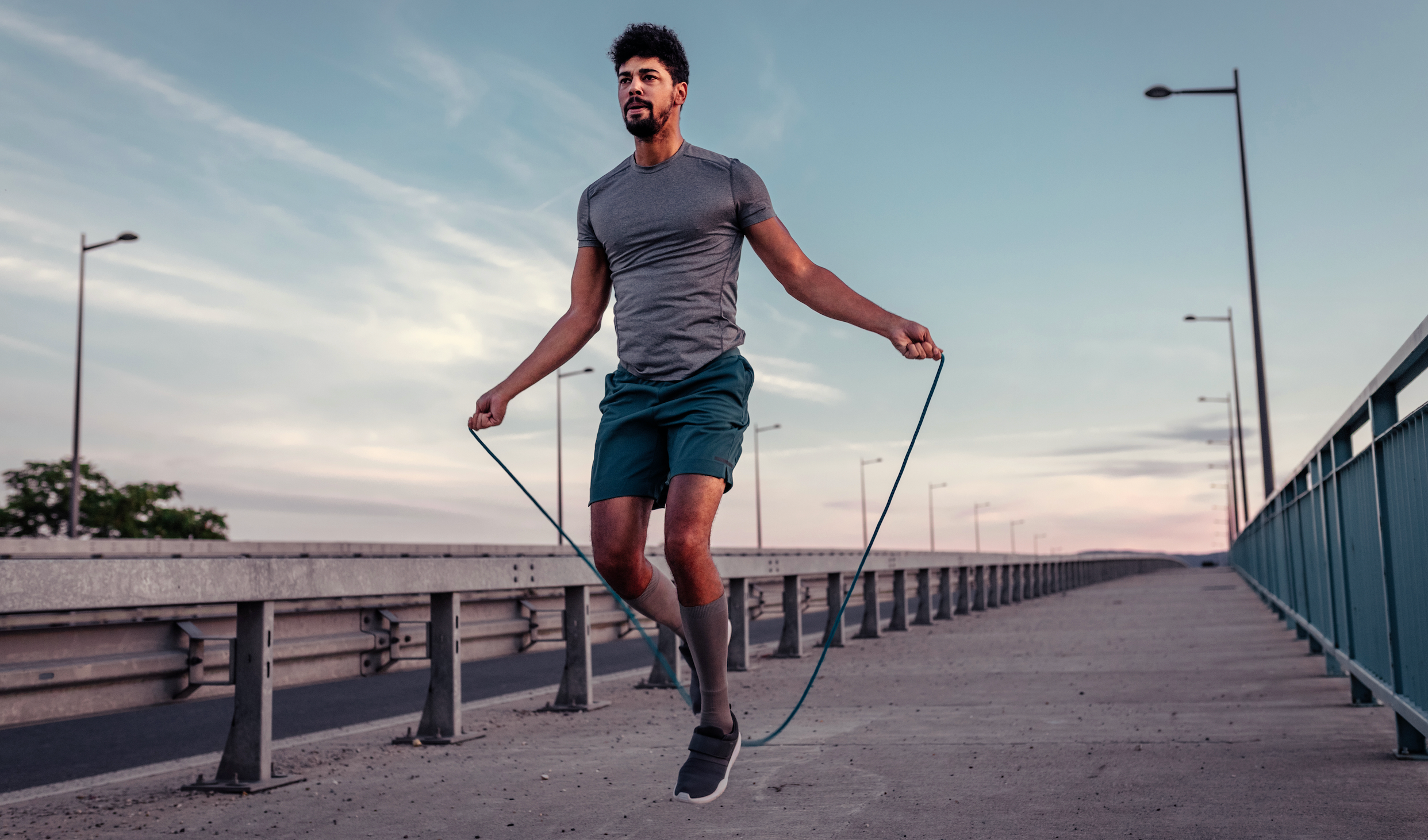
Can you build muscle with only calisthenics?
You may not have weights on your side with calisthenic workouts, but you do have gravity.
“The great thing about calisthenics is that it can achieve anything that traditional workouts can and more,” explains Chris Higgins, an ACE-certified personal trainer and Editor-in-Chief of calisthenics-gear.com. But packing on muscle does mean going the extra mile.
“To emulate a typical muscle-building routine, you should aim to complete three to five sets of at least 10 repetitions,” he said. “Aim to do at least two or three calisthenics exercises for each major muscle group and you're well on your way to building muscle.”
If you find that an exercise is too easy, he suggests increasing resistance with a weight vest or belt. Things are now too challenging? Strike that balance withresistance bands. “The aim is to find that middle ground in which you are operating at a 50% to 75% maximum effort level per repetition.”
Calisthenics comes with additional benefits that you won’t find by frequenting the weight rack. “Calisthenics also improve mobility, flexibility and strengthens your cardiovascular system,” says Bryna Carracino, Owner of BFIT New York, a lifestyle and fitness brand.
Can you get ripped with just calisthenics?
Don’t be fooled by the “no equipment” part of calisthenics. You can absolutely get ripped with calisthenics, so long as your nutrition is in check, says Alexis Reed, group fitness instructor and fitness blogger.
“It’s important to assess your goals and take a holistic approach to your health and wellness.”
Luke Jones, a Movement and Mobility Coach at Hero Movement, agrees. “Good nutrition, sleep, stress management and recovery strategies for optimum results with your body composition.”
Follow this to a T and it’s up to you how fit you become. For example, Higgins says that if you’re targeting a leaner physique, aim for lower reps and a low calorie/carb diet. But if you're looking for a bulkier appearance that even the Hulk would be terrified of, add in extra reps, sets and calories with the aid of protein shakes (and the occasional pizza!)
“All kinds of physiques are possible with the proper training regimen,” Higgins says. “It's all a question of adapting the number of sets, repetitions, diet and type of exercise.”
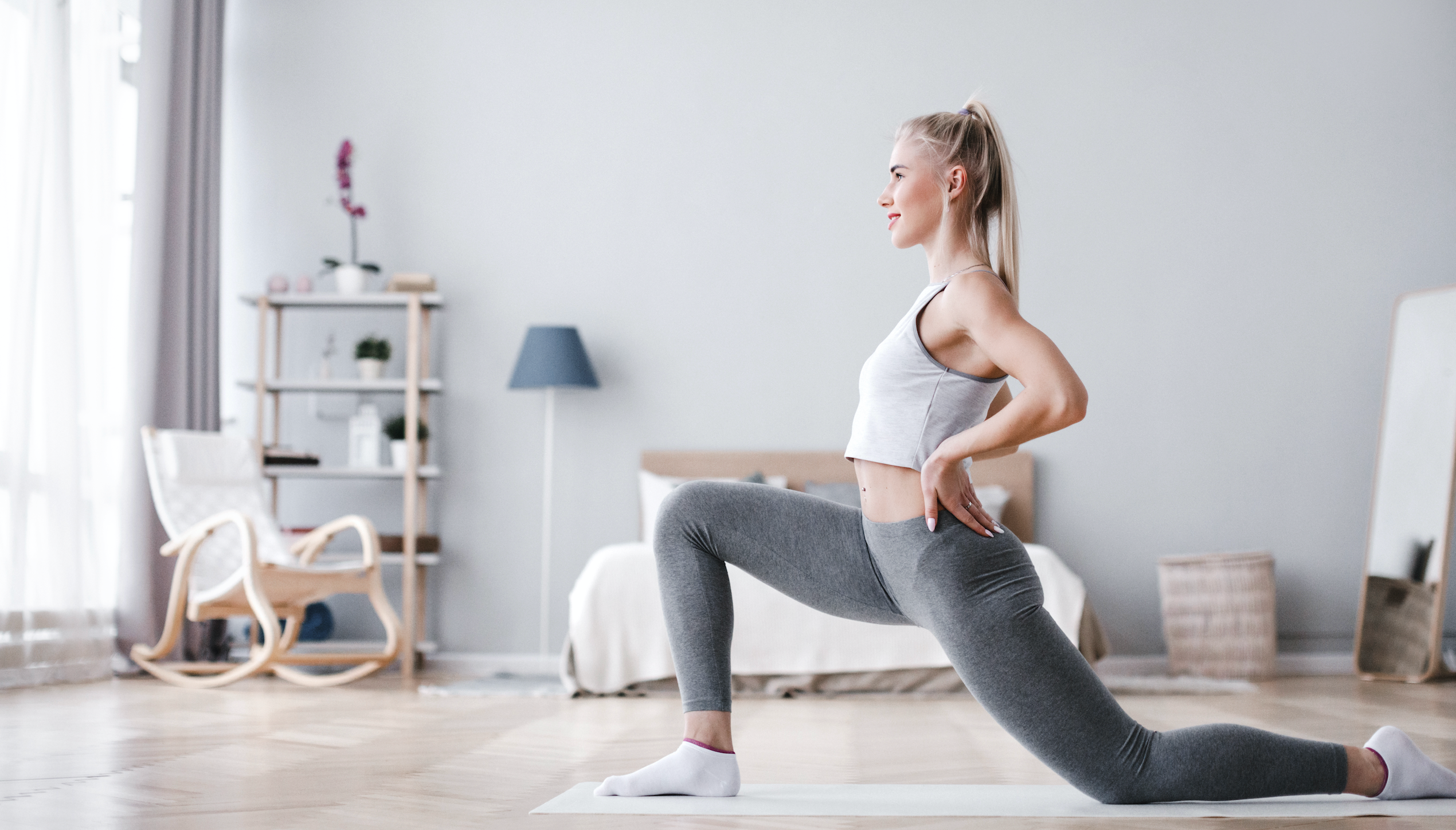
How many days a week should I train calisthenics?
This depends on your goals and current fitness level. Advanced fitness levels could dare to start with three to four times per week, or even five to six. Meanwhile, beginners should start slower by working out two to three times per week, maybe even less.
Carracino recommends being mindful of the level of intensity and how your body responds to it. “If the workout feels easier on the muscles but you feel more winded, then jump into another workout the next day.”
She adds that you may need 24 to 48 hours rest in between your workouts if you’re really sore. Higgins recommendsmobility and flexibility sessions on these days to help the body recover.
How do you plan a calisthenics workout?
You can’t put an effective calisthenics workout plan together without the major muscle groups. This includes the back, chest, arms, shoulders, legs and core, according to Carracino. Once the gang’s all there, you can practically feel the results roll in.
When time is a factor, divide the muscle groups into workout splits. For instance, Higgins recommends choosingtwo or three exercises per major muscle group. He says to opt for ones “that suit you best, given your current range of motion and target muscles.”
When Jones creates calisthenics workouts for his clients, he likes to cover most of the basic primary movement patterns we carry out as humans. This includes squatting, hinging, pushing and pulling. On the flip side, Reed prefershigh-intensity interval training (HIIT) exercises for her calisthenics workout. “You can get a lot of work accomplished in a short period of time. This is especially great for active individuals!”
You can play around with any of these approaches or combine all three.
Just don’t forget the warm-up! For this, Higgins recommends warm-up drills. “These are drills that elevate your heart rate and ideally make you break out a little sweat, without risking injuries or straining the body too much.” Some examples include jumping rope, arm swings, bar hangs and half burpees.
If you wanted to focus on stretches instead— either before or after the workout— he recommends choosing poses that activate the tendons most challenging to you. “When you're still a beginner in calisthenics, these tend to be the wrists, forearms, hips, hamstrings and shoulders.”
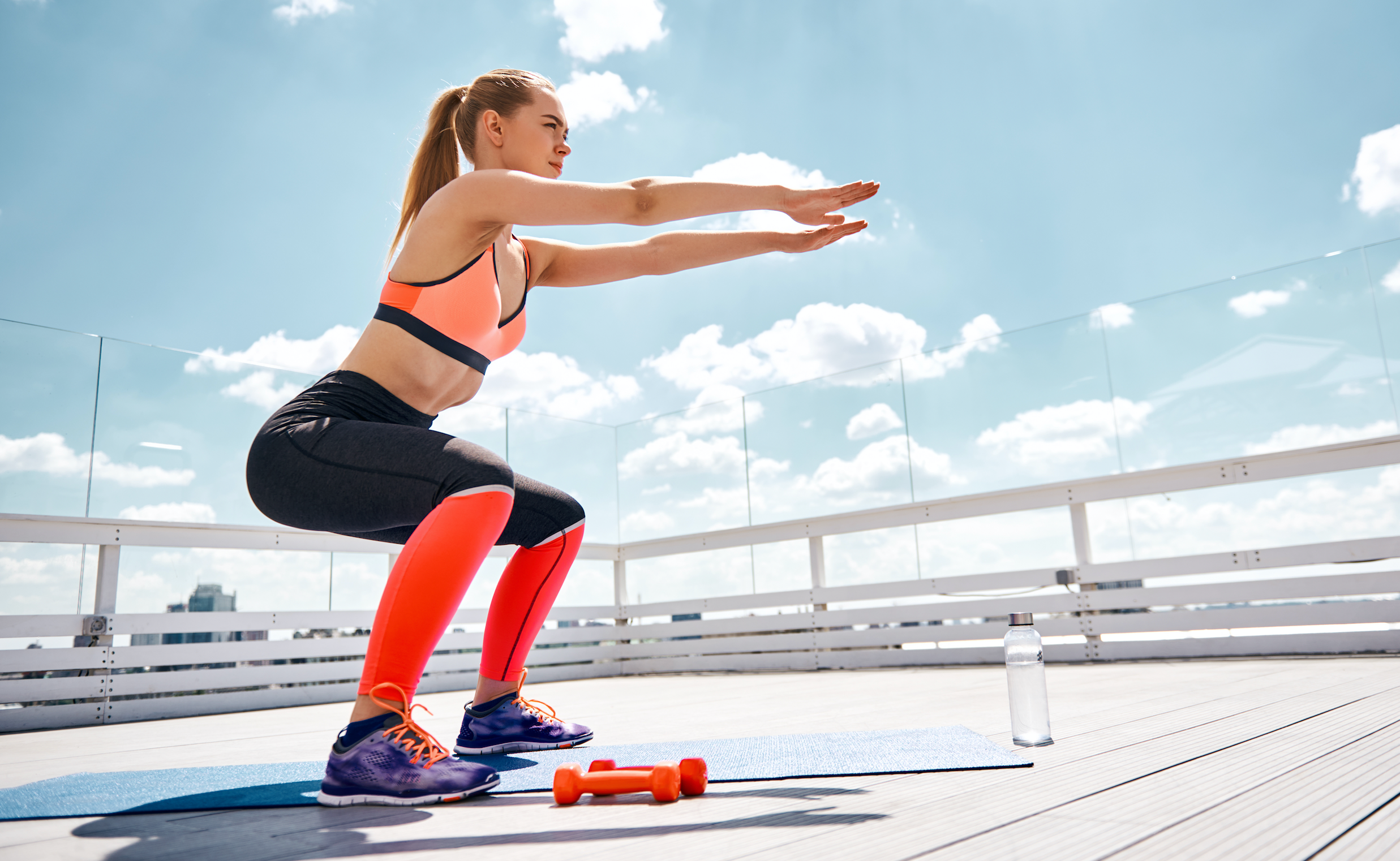
calisthenics workout
Here's an example workout, provided by Higgins. It’s an equipment-free workout and suitable for all fitness levels.
“Please note that the reps and sets are for guidance only. As long as you stay within the three to six sets of 10 to 20 reps range, you'll be building muscle.”
Be sure to sip on Vital Performance™ PRE to get you pumped up before your workout and follow it up with Vital Performance™ RECOVER to help support post-workout recovery. Both are made with all the good stuff your workout needs, such as amino acids and collagen.
Warm-Up:
Jump Rope (3 sets, 60 seconds)
Deep Squat Hold (2 minutes)
Wrist Circles (20 for each rotation direction)
Arm Swings (1 minute for each direction)
Legs, lower body:
Bodyweight Squats (4 sets, 12 reps).Advanced variation: Single leg heel touch squat or Archer squat
Forward Lunges (4 sets, 14 reps).Advanced variation: Rear foot elevated lunge.
core:
Flutter Kicks (3 sets, 10 reps).Advanced variation: scissor kicks.
Sit-Ups (4 sets, 15 reps).Beginner variation: crunches. Advanced variation: twisting sit-ups.
Lying Leg Raises (4 sets, 12 reps).Beginner variation: Lying leg tucks. Advanced variation: L-sit hold
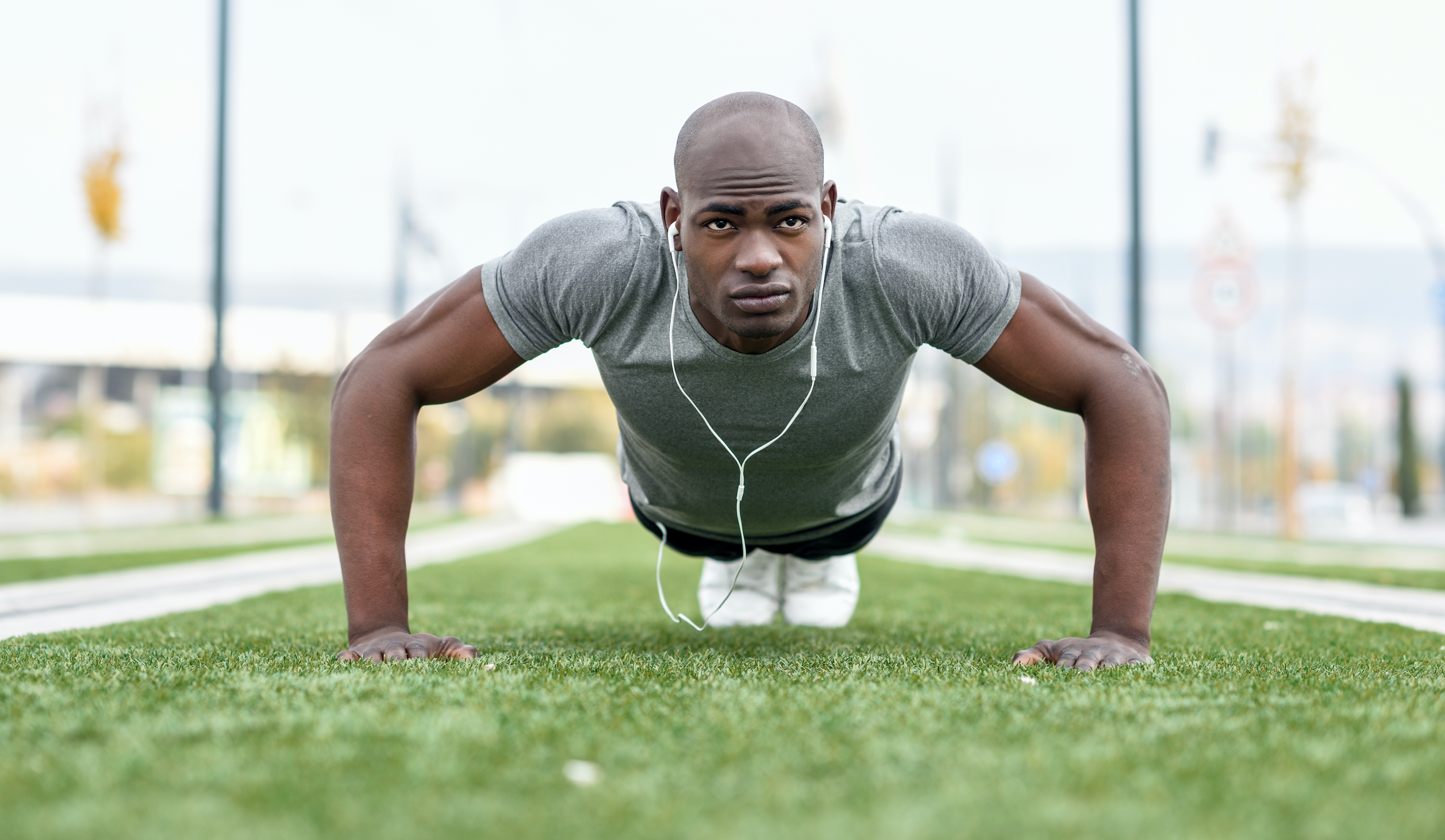
arms, chest, back:
Push-Ups (4 sets, 12 reps).Beginner variation: Hands elevated or wall push-ups. Advanced variation: Diamond push-ups or feet elevated push-ups
Doorway Row (4 sets, 15 reps). Advanced variation: One arm doorway row.
Bench or Chair-Elevated Tricep Extension (4 sets, 12 reps).Beginner variation. Wall elevated tricep extension.
Workout Glossary
Jump Rope (3 sets, 60 seconds)
Find any kind of rope (preferably a speed rope), grab the handles or ends of the rope and place the rope behind your heels and swing forward. As the rope reaches its high point, bend the knees and jump. Repeat this movement for at least 60 seconds.
Deep Squat Hold (2 minutes)
With your feet at shoulder distance, perform a normal bodyweight squat, holding the position at the bottom, with the glutes as close to the floor as possible. Keep your back straight and the feet in contact with the floor. Hold for a minute or two.
Wrist Circles (20 for each rotation direction)
With one hand, grab your other hand’s wrist. Perform circles as wide as possible with the hand that is free, completing at least 20 full rotations per direction. Repeat with the other hand.
Arm Swings (1 minute for each direction)
With your feet at shoulder distance and arms besides the body, swing both arms forwards aiming to pass by as close as possible to the ears for about one minute. Repeat this motion going backwards for another minute.
Legs, Lower Body:
Bodyweight Squats (4 sets, 12 reps). Advanced variation: Single leg heel touch squat or archer squat
With your feet pointing forward at shoulder distance from each other, lower your hips until your legs form a 90-degree angle at the knees. Throughout the movement, keep your back straight, your arms straightforward (or tucked in the chest) and your whole feet firmly planted on the ground.
Forward Lunges (4 sets, 14 reps) Advanced variation: Rear foot elevated lunge.
Standing with your feet at hip distance with your hands in your hips, take a step forward, about 3 feet. Lower your body until your knee reaches the floor or stays just above it. Pressing on the heel, return to the upright position, repeating the movement with the other leg.
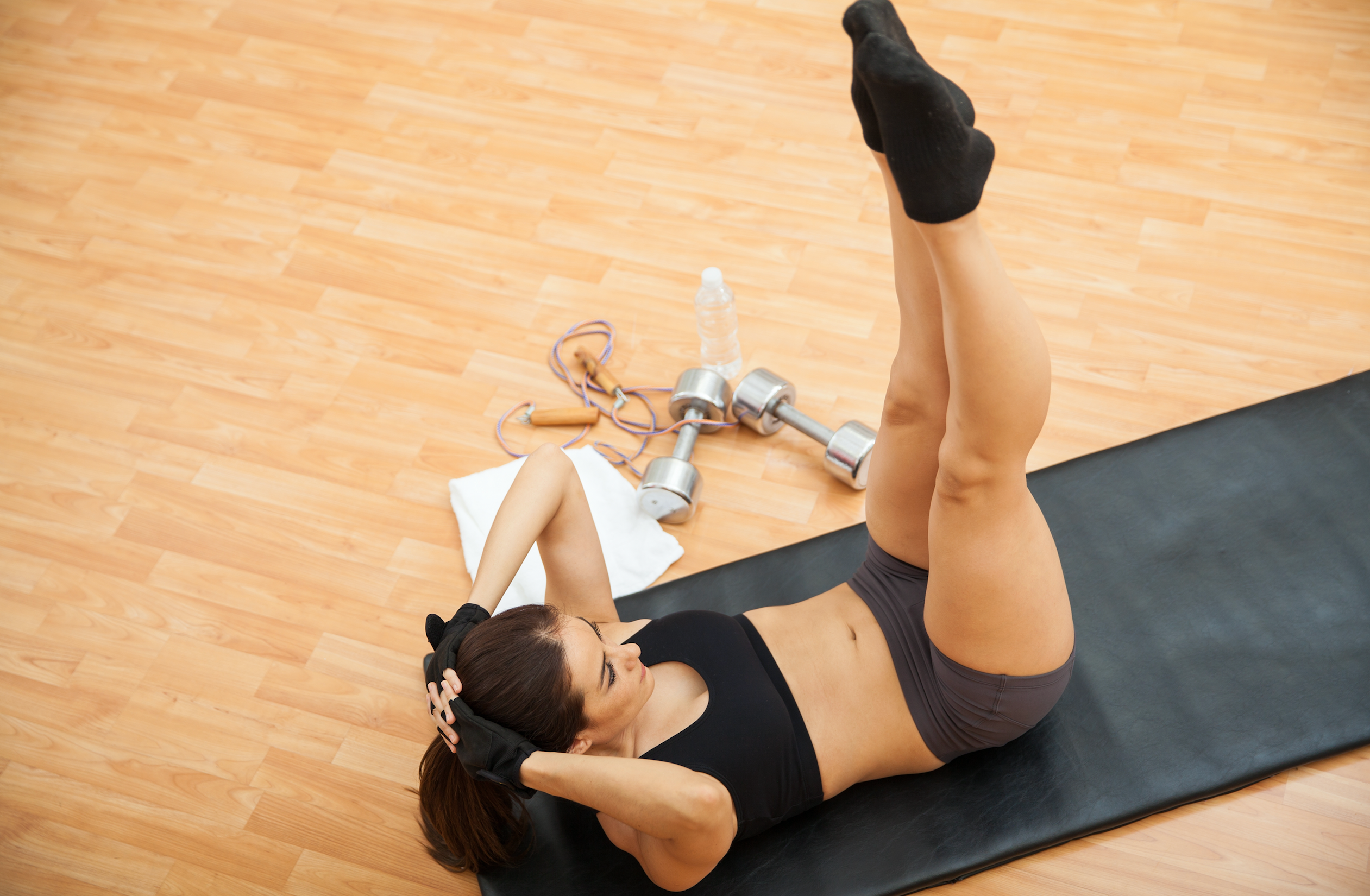
core:
Flutter Kicks (3 sets, 10 reps) Advanced variation: scissor kicks.
Lay belly-up on the floor with your hands underneath the lower area of your glutes. Raise both feet a few inches off the floor and proceed to raise and lower each foot about 1 foot in distance in an alternating fashion.
Sit-Ups (4 sets, 15 reps). Beginner variation: crunches. Advanced variation: twisting sit-ups.
Lie down belly-up with your legs bent and arms crossed at the chest. Bring your chest as close to your knees as possible. If you have difficulties keeping your feet on the floor, add some weights to the top of your feet.
Lying Leg Raises (4 sets of 12 reps) Beginner variation: Lying leg tucks. Advanced variation: L-sit hold
Maintaining this same belly-up position, straighten the legs, tuck your hands underneath the lower glutes and raise the legs, aiming to form a 90-degree angle with your upper body. Release the legs back to a straight position as slowly as possible.
arms, chest, back:
Push-Ups (4 sets, 12 reps). Beginner variation: Hands elevated or wall push-ups. Advanced variation: Diamond push-ups or feet elevated push-ups.
Lie on the floor belly down, placing your hands next to your shoulders.
Doorway Row (4 sets, 15 reps). Advanced variation: One arm doorway row.
Place your feet within the door frame line grabbing the wall on each side with your palms. Elbows should be pointing to the sides. Now, let your body lean back naturally and push back to an upright position.
Bench or Chair Elevated Tricep Extension (4 sets, 12 reps). Beginner variation. Wall elevated tricep extension.
Find a chair or bench in your house. Ideally, this will be a sturdy beach that sits at about 2 feet from the floor. Grab the bench with both hands, assuming a plank position with your arms bent. Now straighten the arms pushing your body upwards, all whilst maintaining the whole body straight as an arrow.
Vital note: This article has been made available for informational and educational purposes only. It is not intended to be a substitute for professional medical advice, diagnosis, or treatment. Always seek the advice of your physician or another qualified health provider with any questions you may have regarding a medical condition. Your licensed healthcare professional can best provide you with the diagnosis and treatment of any medical condition and assist you as well in deciding whether a dietary supplement will be a helpful addition to your regimen.













